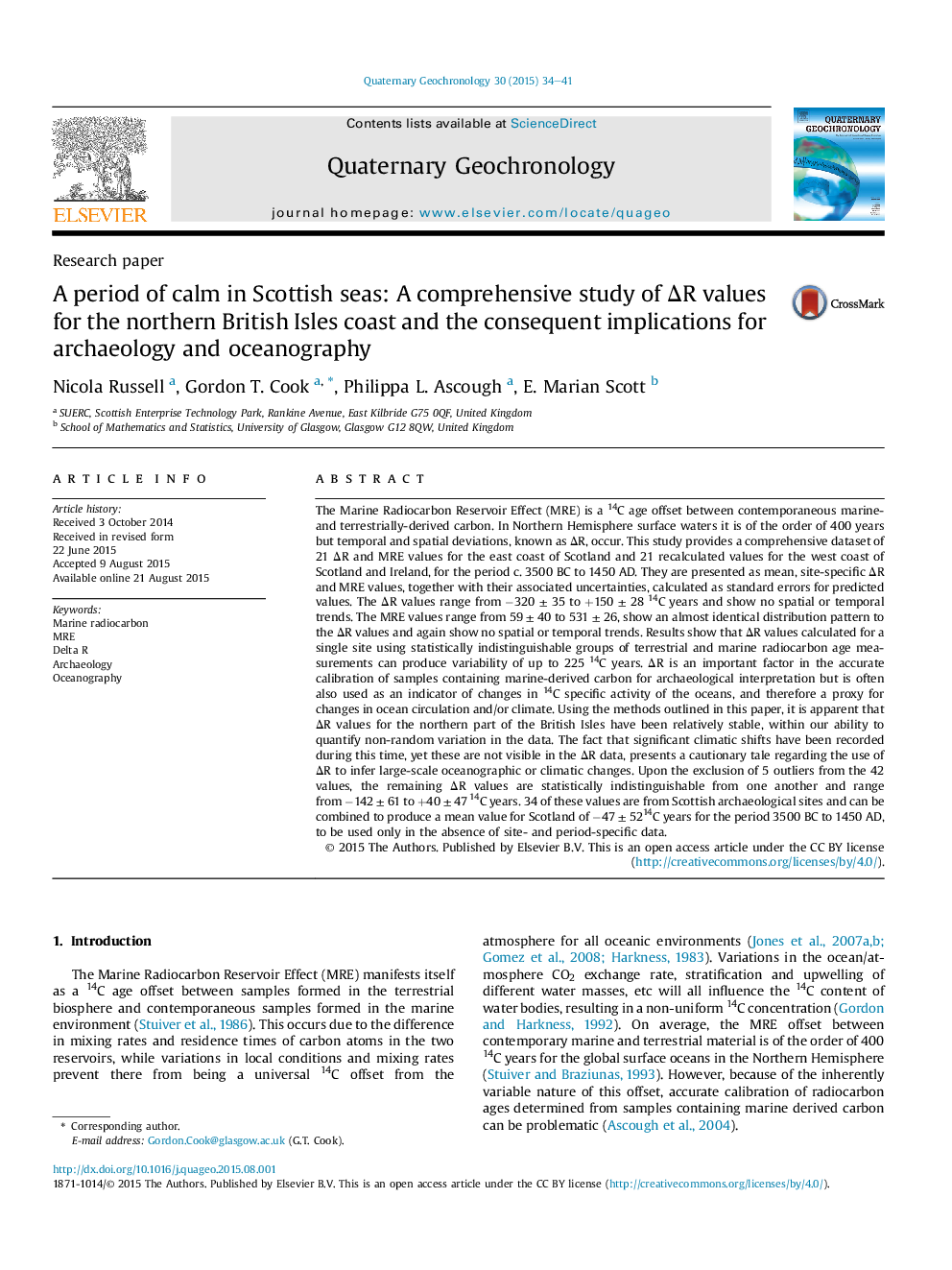| کد مقاله | کد نشریه | سال انتشار | مقاله انگلیسی | نسخه تمام متن |
|---|---|---|---|---|
| 6442651 | 1355947 | 2015 | 8 صفحه PDF | دانلود رایگان |
عنوان انگلیسی مقاله ISI
A period of calm in Scottish seas: A comprehensive study of ÎR values for the northern British Isles coast and the consequent implications for archaeology and oceanography
دانلود مقاله + سفارش ترجمه
دانلود مقاله ISI انگلیسی
رایگان برای ایرانیان
موضوعات مرتبط
مهندسی و علوم پایه
علوم زمین و سیارات
ژئوشیمی و پترولوژی
پیش نمایش صفحه اول مقاله

چکیده انگلیسی
The Marine Radiocarbon Reservoir Effect (MRE) is a 14C age offset between contemporaneous marine- and terrestrially-derived carbon. In Northern Hemisphere surface waters it is of the order of 400 years but temporal and spatial deviations, known as ÎR, occur. This study provides a comprehensive dataset of 21 ÎR and MRE values for the east coast of Scotland and 21 recalculated values for the west coast of Scotland and Ireland, for the period c. 3500 BC to 1450 AD. They are presented as mean, site-specific ÎR and MRE values, together with their associated uncertainties, calculated as standard errors for predicted values. The ÎR values range from â320 ± 35 to +150 ± 28 14C years and show no spatial or temporal trends. The MRE values range from 59 ± 40 to 531 ± 26, show an almost identical distribution pattern to the ÎR values and again show no spatial or temporal trends. Results show that ÎR values calculated for a single site using statistically indistinguishable groups of terrestrial and marine radiocarbon age measurements can produce variability of up to 225 14C years. ÎR is an important factor in the accurate calibration of samples containing marine-derived carbon for archaeological interpretation but is often also used as an indicator of changes in 14C specific activity of the oceans, and therefore a proxy for changes in ocean circulation and/or climate. Using the methods outlined in this paper, it is apparent that ÎR values for the northern part of the British Isles have been relatively stable, within our ability to quantify non-random variation in the data. The fact that significant climatic shifts have been recorded during this time, yet these are not visible in the ÎR data, presents a cautionary tale regarding the use of ÎR to infer large-scale oceanographic or climatic changes. Upon the exclusion of 5 outliers from the 42 values, the remaining ÎR values are statistically indistinguishable from one another and range from â142 ± 61 to +40 ± 47 14C years. 34 of these values are from Scottish archaeological sites and can be combined to produce a mean value for Scotland of â47 ± 5214C years for the period 3500 BC to 1450 AD, to be used only in the absence of site- and period-specific data.
ناشر
Database: Elsevier - ScienceDirect (ساینس دایرکت)
Journal: Quaternary Geochronology - Volume 30, Part A, October 2015, Pages 34-41
Journal: Quaternary Geochronology - Volume 30, Part A, October 2015, Pages 34-41
نویسندگان
Nicola Russell, Gordon T. Cook, Philippa L. Ascough, E. Marian Scott,